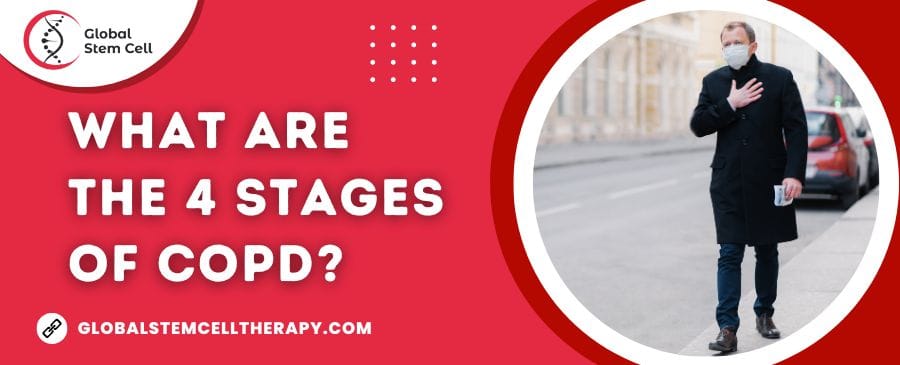A Guide to know Signs That COPD Is Getting Worse
Table of Content
Signs That COPD Is Getting Worse! Chronic obstructive pulmonary disease (COPD) is a progressive lung condition that affects millions of people worldwide. Recognizing the signs that COPD is getting worse can help patients and their healthcare providers take timely action to manage symptoms and maintain the best possible quality of life. In this comprehensive guide, we’ll explore the signs that indicate COPD is worsening and discuss effective strategies for managing the condition.
COPD is a complex and often misunderstood disease. By understanding the early warning signs and learning how to manage the condition effectively, those affected can lead fuller, more active lives. This guide will provide valuable information for individuals with COPD, their loved ones, and healthcare professionals.
Understanding COPD
Chronic obstructive pulmonary disease (COPD) is a chronic lung disease characterized by airflow limitation and inflammation in the airways. It is typically caused by long-term exposure to lung irritants, such as cigarette smoke or air pollution. COPD is a leading cause of disability and death worldwide, with the World Health Organization estimating that it will become the third leading cause of death globally by 2030.
There are two main types of COPD: chronic bronchitis and emphysema. Chronic bronchitis involves inflammation and thickening of the bronchial tubes, leading to excessive mucus production and a persistent cough. Emphysema, on the other hand, is characterized by damage to the air sacs (alveoli) in the lungs, causing shortness of breath and reduced lung capacity.
Causes and Risk Factors
The primary cause of COPD is long-term exposure to lung irritants. The most common risk factors include:
- Smoking or exposure to secondhand smoke
- Occupational exposure to dust, chemicals, or fumes
- Indoor or outdoor air pollution
- A history of respiratory infections
- Genetic factors, such as alpha-1 antitrypsin deficiency
It’s important to be aware of these risk factors, as addressing them can help prevent the development or progression of COPD. For example, quitting smoking or avoiding exposure to harmful substances can significantly reduce the risk of developing COPD or slow down its progression.
Symptoms of COPD
The most common symptoms of COPD include:
- Persistent cough, often with mucus
- Shortness of breath, especially during physical activity
- Wheezing
- Chest tightness
These symptoms can range from mild to severe and typically worsen over time. COPD symptoms can significantly impact a person’s quality of life and ability to perform daily activities.
Less Common Symptoms
Less common symptoms of COPD may include:
- Fatigue
- Frequent respiratory infections
- Weight loss
- Swelling in the ankles, legs, or feet
These symptoms can be indicative of more advanced COPD or complications related to the disease. It’s essential for individuals with COPD to monitor their symptoms and communicate any changes to their healthcare provider. Early intervention can help manage symptoms and prevent further complications.
Signs That COPD Is Getting Worse
COPD is a progressive lung disease that requires close monitoring and appropriate management to maintain the best possible quality of life. Here are some signs that may indicate COPD is getting worse:
Increased Shortness of Breath
An increase in shortness of breath, particularly during activities that were previously manageable, is often a sign that COPD is progressing. This can be due to a decrease in lung function or worsening inflammation in the airways. It’s important for patients to discuss any changes in their breathing with their healthcare provider, as adjustments to their treatment plan may be necessary.
Increased shortness of breath can also affect a person’s ability to perform daily tasks and engage in social activities. This can lead to a decrease in overall quality of life and may contribute to feelings of isolation or depression.
Frequent Exacerbations
COPD exacerbations, or flare-ups, are periods of increased symptoms and lung inflammation. Frequent exacerbations can be a sign that the condition is worsening and may require adjustments to the treatment plan. It’s essential for patients to recognize the early signs of an exacerbation and seek medical help promptly, as early intervention can help prevent complications and hospitalization.
Exacerbations can also have a significant impact on a person’s mental and emotional well-being. Anxiety surrounding the possibility of future exacerbations can be overwhelming and may lead to a more sedentary lifestyle, further contributing to the decline in overall health and well-being.
Decline in Exercise Tolerance
A decrease in the ability to perform physical activities, such as walking or climbing stairs, can indicate that COPD is getting worse. This decline in exercise tolerance may be due to increased shortness of breath, fatigue, or muscle weakness. Regular exercise is essential for individuals with COPD, as it can help maintain muscle strength and improve overall health.
A decline in exercise tolerance can also lead to a more sedentary lifestyle, which can exacerbate COPD symptoms and contribute to other health issues, such as obesity, heart disease, and diabetes.
Weight Loss
Unintentional weight loss can be a sign of worsening COPD. This may occur due to increased difficulty breathing, which can make it challenging to eat enough to maintain a healthy weight. Weight loss can also result from muscle wasting, a common issue in advanced COPD.
Maintaining a healthy weight is crucial for individuals with COPD, as being underweight can lead to a weakened immune system and increased risk of infections. Proper nutrition and, if necessary, nutritional supplements can help support overall health and well-being.
Swelling in the Ankles, Legs, or Feet
Swelling, also known as edema, may occur in the lower extremities due to poor circulation or heart strain caused by the extra work required to pump blood through damaged lungs. This can be a sign that COPD is worsening and affecting other organs in the body.
Managing edema may involve elevating the legs, wearing compression stockings, or taking diuretics as prescribed by a healthcare provider. It’s important to address swelling promptly, as untreated edema can lead to further complications, such as skin ulcers or blood clots.
Cyanosis
Cyanosis is a bluish discoloration of the skin, lips, or nails caused by low oxygen levels in the blood. This can be a sign that COPD is progressing and the lungs are no longer able to provide sufficient oxygen to the body.
Cyanosis should be reported to a healthcare provider immediately, as it may necessitate adjustments to the patient’s treatment plan, such as supplemental oxygen or changes in medication.
Morning Headaches
Waking up with headaches can be a sign that COPD is getting worse. These headaches may be caused by low oxygen levels or high carbon dioxide levels in the blood during sleep.
Patients experiencing morning headaches should discuss this symptom with their healthcare provider, as it may indicate a need for adjustments to their treatment plan or the use of nighttime oxygen therapy. Maintaining good sleep hygiene and using a humidifier in the bedroom can also help alleviate morning headaches.
Mental Health Issues
Depression and anxiety are common among individuals with COPD and can worsen as the disease progresses. Mental health issues can negatively impact overall quality of life and make it more challenging to manage COPD symptoms.
It’s essential for patients to discuss any mental health concerns with their healthcare provider, as effective treatments are available. This may include therapy, support groups, or medication to help manage anxiety and depression.
Managing COPD
Living with chronic obstructive pulmonary disease (COPD) can be challenging, but with the right strategies and support, individuals can manage their symptoms effectively and maintain a good quality of life. Here are some key aspects of managing COPD:
Medications
Several types of medications may be prescribed to manage COPD symptoms, including:
- Bronchodilators
- Inhaled corticosteroids
- Combination inhalers
- Phosphodiesterase-4 inhibitors
Mucolytics
Adherence to the prescribed medication regimen is crucial for managing COPD symptoms effectively and preventing exacerbations. Patients should discuss any concerns or side effects with their healthcare provider, as adjustments to the medication plan may be necessary.
Pulmonary Rehabilitation
Pulmonary rehabilitation is a comprehensive program that combines exercise, education, and support to help individuals with COPD manage their condition and improve their quality of life. The program typically includes supervised exercise sessions, breathing techniques, nutritional counseling, and psychological support.
Participating in pulmonary rehabilitation can help patients regain their strength, increase their exercise tolerance, and learn valuable self-management skills. Studies have shown that pulmonary rehabilitation can significantly improve COPD symptoms and reduce the risk of exacerbations.
Oxygen Therapy
Supplemental oxygen may be prescribed for individuals with low blood oxygen levels to help improve shortness of breath, increase exercise tolerance, and prevent complications related to low oxygen levels. Oxygen therapy can be administered using various devices, such as a nasal cannula or a face mask, depending on the patient’s needs and preferences.
It’s important to use supplemental oxygen as prescribed and to follow any guidelines provided by the healthcare provider or oxygen supplier. Regular monitoring of blood oxygen levels, either at home or during medical appointments, can help ensure that the patient is receiving the appropriate amount of oxygen.
Lifestyle Changes
Adopting a healthy lifestyle can significantly impact the management of COPD and overall quality of life. Some lifestyle changes that can help manage COPD symptoms include:
- Quitting smoking and avoiding exposure to secondhand smoke
- Engaging in regular exercise, such as walking or swimming
- Eating a balanced diet rich in fruits, vegetables, and lean protein
- Practicing stress management techniques, such as deep breathing or meditation
- Avoiding exposure to air pollution and lung irritants
- Making these changes can help slow the progression of COPD, reduce the frequency of exacerbations, and improve overall health and well-being.
When to Seek Medical Help
It’s important for individuals with COPD to maintain regular communication with their healthcare provider and report any changes in their symptoms or overall health. This can help ensure that their treatment plan is optimized and that any signs of worsening COPD are addressed promptly.
Patients should seek medical help if they experience:
- A sudden increase in shortness of breath
- Changes in mucus color, consistency, or odor
- Chest pain or tightness
- Fever or chills
- New or worsening swelling in the ankles, legs, or feet






